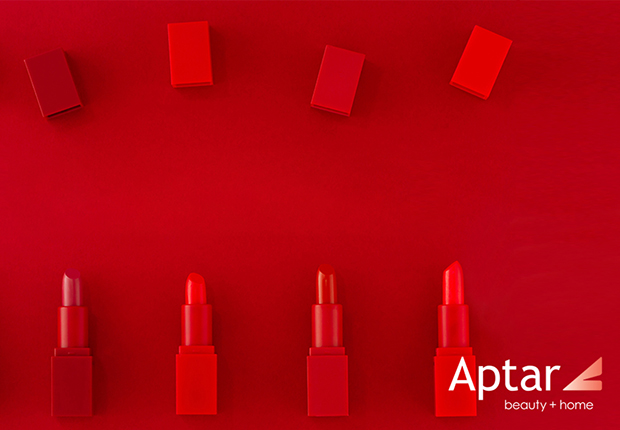Five thousand years ago, in ancient Mesopotamia, women’s favorite cosmetic was prepared by grinding semi-precious stones and blending them with beeswax. A few centuries later, Cleopatra made her own by crushing up cochineals and ant eggs… Fortunately, the formulas have largely changed since then! In terms of packaging, lip color remained liquid or creamy for many years and was therefore relegated to a jar.
Lipstick as we know it today emerged around 1880, with the first real “stick”, a rigid mass that was originally formulated with grape seeds (and is still called a “raisin” in French). The “stick” was inserted into a push-button mechanism that also held it in place and fostered its use. Once the product was used up, the tube could be changed.
The lipstick case: a largely technical piece of “jewelry”
The second major innovation in the history of lipstick occurred after WWII, with the appearance of new twist-up mechanisms which would progressively replace the first push-up cases, mainly inspired by writing pens. Lipstick cases were exclusively made of metal, and they became “jewelry” objects: brands injected their DNA into them, calling on designers to create what could be very luxurious decorations in gold, silver or precious stones. The twist-up mechanism became the focus of a number of patents in order to protect innovations in suppleness, smoothness, and so on.
The third groundbreaking innovation on the lipstick market was, undeniably, the appearance of plastic products at the end of the 1960s, which progressively replaced the metal ones. Plastic does offer various advantages: the simplification of component production, product performance control, easier packaging, and various packaging innovations. It also provides a better sensory experience and a more enjoyable product application with a more supple texture. Combining metal with plastic enabled brands to enjoy the best of both worlds: metal for its luxurious side (weight, texture and sound quality), and plastic for the production of lighter, more precisely formed components with numerous decorative possibilities.
A new technical process that pushes back the limits of creativity
The fourth major technical development came with the appearance of “vacuum metalizing” in the late 1970s. The process consists of applying a layer of aluminum between two coats of veneer to impart plastic with a metallic appearance. For lipstick brands, the limits of creativity became boundless: every shade and every shape became conceivable!
Today’s innovations, inspired by yesterday’s trends
Sometimes what are considered innovations are actually updates of older techniques or ideas. Searching the past for answers to today’s issues, and being able to integrate them into today’s industrial system, is a good way of continuing to innovate and diversity manufacturing approaches.
Tomorrow’s lipstick
Today, environmental protection imperatives must always be taken into account by packaging industrials and brands. Eco-design, for example, dictates the use of recycled materials. Increasingly clean materials are carefully selected to scrupulously observe – and indeed anticipate – the regulations in force. These new production criteria represent as many innovations to come in designing tomorrow’s more eco-friendly packaging.
Conceptualizing tomorrow’s packaging implies considering the future of lipstick. Whether it is presented in the form of an applicator mask, a “two-in-one” product including both lipstick and lip liner, or a flocking applicator system, the objective will always be to perfectly adapt to the new consumer expectations and needs. All these projects – some of them futuristic – do not necessarily translate into mass production; but what is certain is that the lipstick market will continue to innovate for many years to come in order to satisfy the demands of women the world over.

